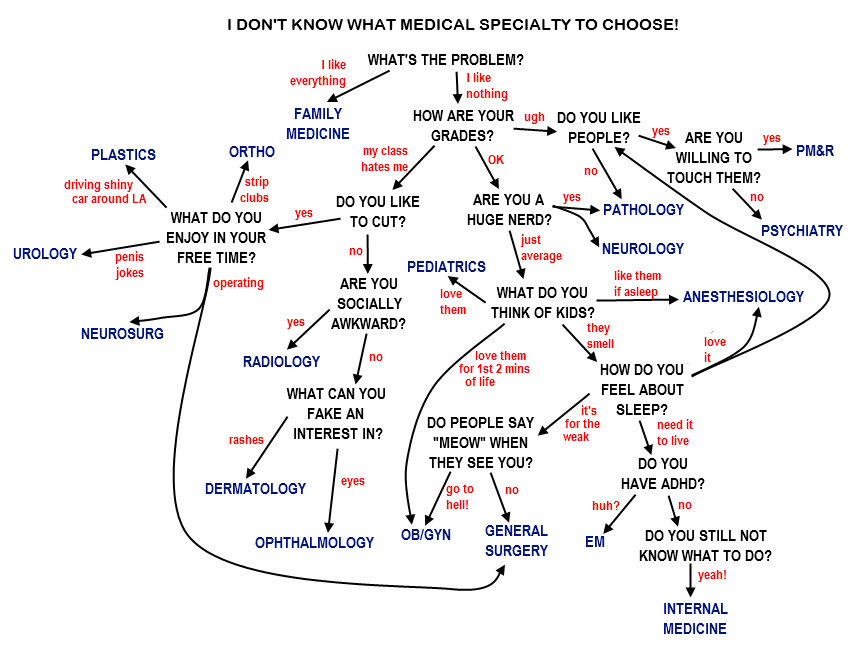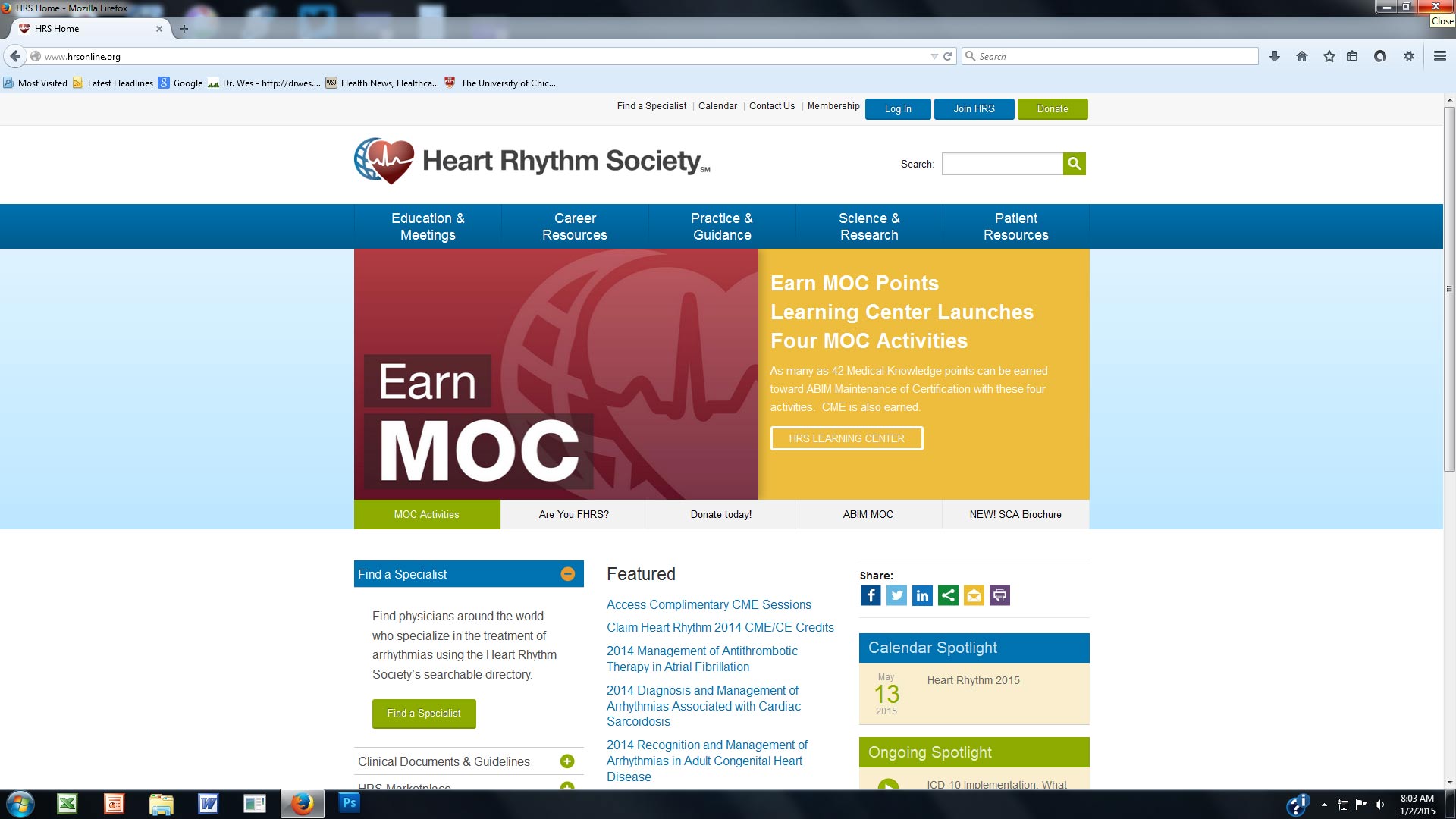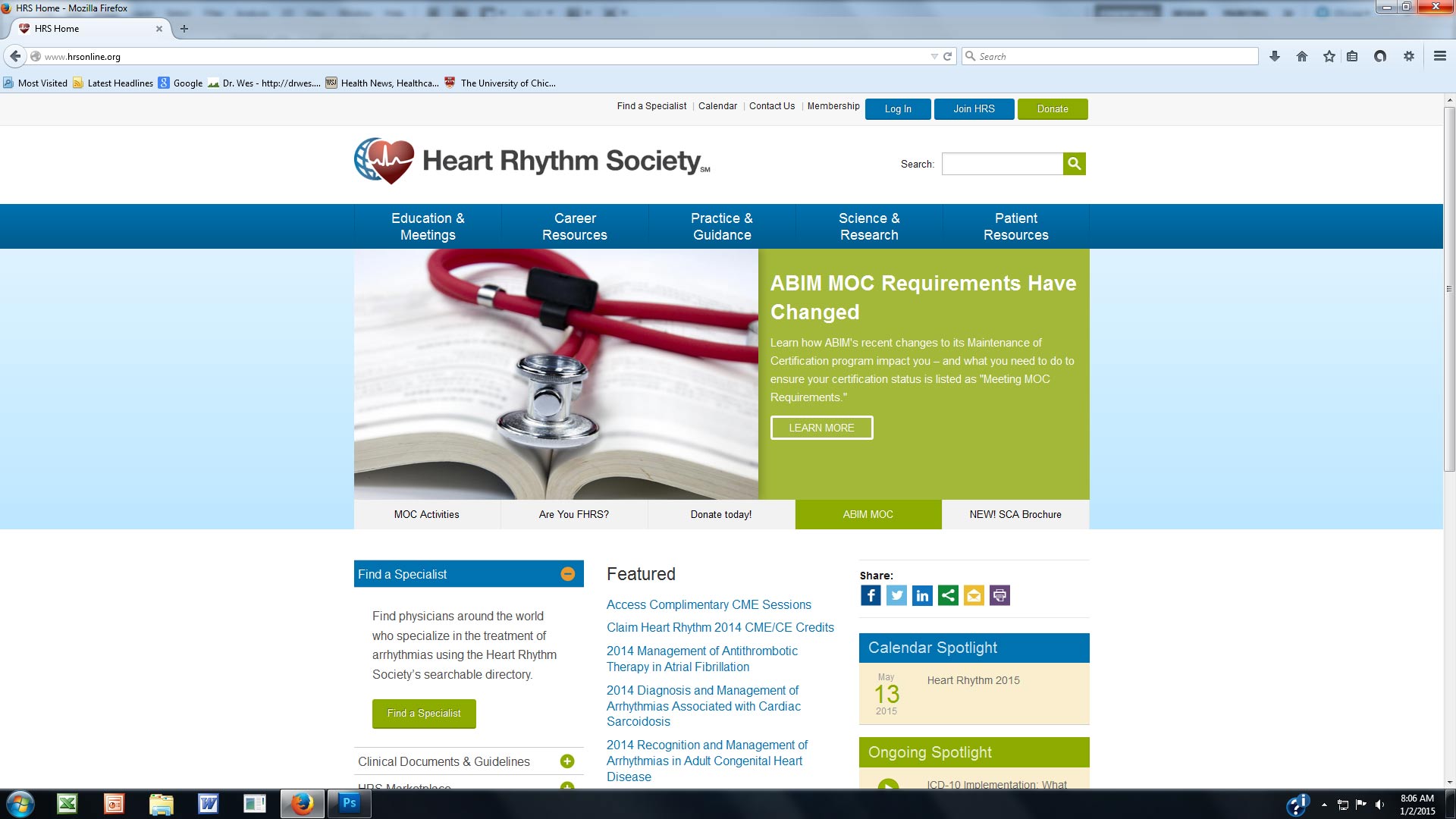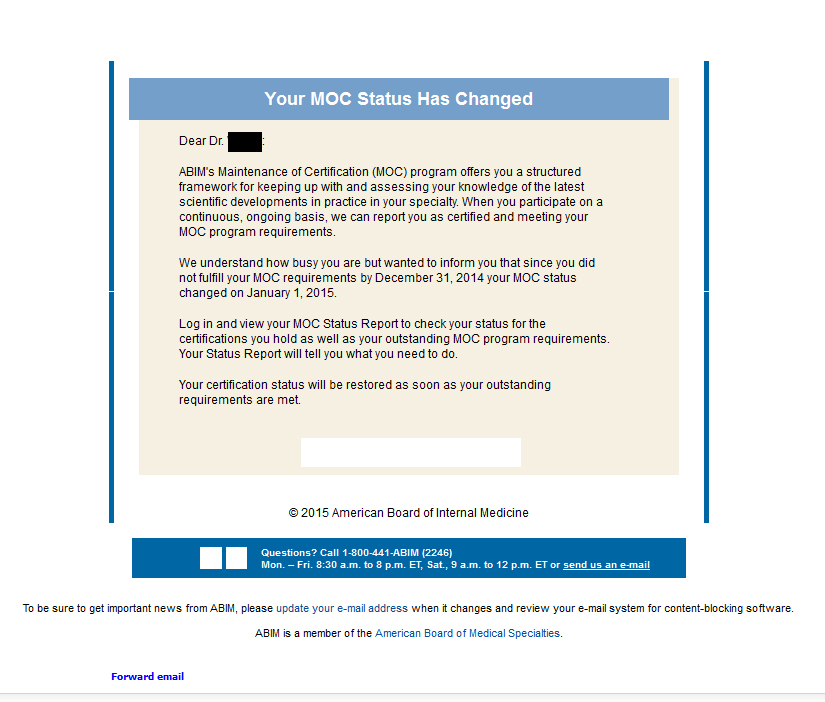Physicians traveling to Philadelphia might want to inquire with the ABIM Foundation to see if they can stay at the Foundation's luxury condominium that they paid for before it's sold at a large loss.
Imagine, arriving to your condominium in your own BMW 7-Series chauffeur-driven town car that's available at your disposal...
... and being greeted at the door by your own personal doorman:
... and having a helpful Congierge lady that can help service your every need while in Philadelphia:
Then, after a hard day at work directing meetings or traveling to Washington, you can return home and cook dinner in a nice kitchen with somewhat dated amenities:
After that, you can take a nice shower in the Master Bath:
...while your guests use the second. slightly less glamorous second bathroom:
No doubt you'll have a relaxing stay in Philadelphia - all on the backs of your own colleagues board certification and Maintenance of Certification testing fees!
See what you can have when you Choose Wisely®?
-Wes
Saturday, January 31, 2015
Friday, January 30, 2015
Is the ABIM Hiding Something?
Mr. Charles Kroll, a health care non-for-profit accountant, notes a troubling discrepancy this morning in the 2014 consolidated financial statement recently released by the American Board of Internal Medicine (ABIM) and it's Foundation:
Ahem, where, exactly, did the money do? Why aren't supplemental information reports included in the 2014 financial statement? Might the ABIM "not be meeting MOC requirements" for public disclosures themselves?
-Wes
Addendum 09:25 am CST: Post edited (underlined text) to reflect changes made to the MedCityNews piece after it was originally republished here.
The American Board of Internal Medicine (ABIM) recently posted the Consolidated (i.e. including ABIM Foundation) Financial Report for the Year Ending June 30, 2014 (and June 30, 2013) to it’s Revenue and Expenses: Where Does the Money Go? page.So questions must be posed about the ABIM's disclosure policy on their "Where Does the Money Go?" webpage:
The Financial Report’s Contents page lists 3 Financial Statements and 12 pages of Notes to Consolidated Financial Statements.
The Consolidated Financial Report for the Year Ending June 30, 2013 (and June 30, 2012) filed with the State of Pennsylvania on April 7, 2014 Contents page lists 3 Financial Statements, 12 pages of Notes to Consolidated Financial Statements, and 6 Supplementary Information reports spanning 8 pages.
The Financial Report for the Year Ending June 30, 2013 was never posted on ABIM’s Revenue and Expenses page.
The 6 Supplementary Information reportslistedincluded at June 30, 2013, but not June 30, 2014, are as follows: Consolidating Statements of Financial Position (2 pages), Consolidating Statement of Activities (2 pages), Schedule of ABIM Changes in Unrestricted Net Assets (Deficit) from Operations, Consolidating Schedule of Administrative, Program and Project Expenses, Consolidating Schedule of Staff Expenses and Consolidating Schedule of Office Expenses.
Ahem, where, exactly, did the money do? Why aren't supplemental information reports included in the 2014 financial statement? Might the ABIM "not be meeting MOC requirements" for public disclosures themselves?
-Wes
Addendum 09:25 am CST: Post edited (underlined text) to reflect changes made to the MedCityNews piece after it was originally republished here.
Monday, January 26, 2015
Questioning the ABIM Leadership Compensation
Compensation amounts for the past President and CEO of the American Board of Internal Medicine (ABIM) were reviewed over the last 10 years of available tax documents. I have outlined them below. We should recall that US physicians fund 97% of the ABIM's revenue.
Total haul by one physician officer: $7,249,143 over 10 years (or $724,914/yr). This amount does not include the additional consulting fees outlined above. (Not too bad for a desk job that doesn't involve patient care.)
Which leads practicing US physicians to wonder how much compensation did the current ABIM President and CEO earned in fiscal year 2014. Might it have exceeded $1 million? (We should note the most recent audited financial statement available to date disclosed a $568,000 salary with $131,000 in deferred compensation for a "new key employee" hired effective 7 June 2013, but does not specify the additional compensation this "new employee" will recieve from the ABIM's own Foundation.)
The fiscal year 2014 ABIM Form 990 will be available soon enough. If the ABIM leadership salaries are indeed this high going forward, there should be little doubt why physicians must now pay the ABIM every two years to "maintain" their board certification status.
It seems that the salaries of the ABIM leadership demand it.
-Wes
Addendum: To all concerned physicians: consider signing my petition to stop the marketing of the ABMS/ABIM Maintenenace of Certification program, one professional society at a time.
| Fiscal Year | Compensation | Comments |
|---|---|---|
| 2004 | $580,377 | Includes $50,000 performance bonus awarded to Dr. Cassel by Compensation Committee of the Board of Directors of ABIM |
| 2005 | $593,014 | |
| 2006 | $653,922 | |
| 2007 | $646,510 | 35 hrs/wk. $2.3 million condo purchased by ABIM Foundation. |
| 2008 | $627,472 | 35 hrs/wk. Spousal travel fees also paid (not itemized). |
| 2009 | $865,451 | 35 hrs/wk. Spousal travel fees also paid (not itemized). |
| 2010 | $862,191 | 35 hrs/wk. Spousal travel fees also paid (not itemized). |
| 2011 | $794,852 | 35 hrs/wk. Spousal travel fees also paid (not itemized). |
| 2012 | $786,751 | 35 hrs/wk. Spousal travel fees also paid (not itemized). Also received $203,500 from Kaiser Health Plans and Hospitals |
| 2013 | $838,603 | 35 hrs/wk. Spousal travel fees also paid (not itemized). Additional compensation earned: $235,000 from Premier, Inc. |
Total haul by one physician officer: $7,249,143 over 10 years (or $724,914/yr). This amount does not include the additional consulting fees outlined above. (Not too bad for a desk job that doesn't involve patient care.)
Which leads practicing US physicians to wonder how much compensation did the current ABIM President and CEO earned in fiscal year 2014. Might it have exceeded $1 million? (We should note the most recent audited financial statement available to date disclosed a $568,000 salary with $131,000 in deferred compensation for a "new key employee" hired effective 7 June 2013, but does not specify the additional compensation this "new employee" will recieve from the ABIM's own Foundation.)
The fiscal year 2014 ABIM Form 990 will be available soon enough. If the ABIM leadership salaries are indeed this high going forward, there should be little doubt why physicians must now pay the ABIM every two years to "maintain" their board certification status.
It seems that the salaries of the ABIM leadership demand it.
-Wes
Addendum: To all concerned physicians: consider signing my petition to stop the marketing of the ABMS/ABIM Maintenenace of Certification program, one professional society at a time.
Friday, January 23, 2015
Care Pathways and Their Kin
| Transitions of Care in Heart Failure, Circulation Heart Failure, January 2015 |
| Living in Washington DC Brochure |
 |
| (Getting 50% of Liquor - Courtesy Harringtonandselves.com) |
 |
| (Choosing a Medical Specialty - Courtesy Surgical Sciences blog) |
-Wes
Wednesday, January 21, 2015
Katz: In Defense of the Annual Physical
David L, Katz, MD, Director of the Yale University Prevention Research Center and President, American College of Lifestyle Medicine, makes aa case in defense of the annual physical examination, once a cornerstone of American medicine.
-Wes
I would argue, then, that glib dismissal is misguided. Rather, the safest and most promising option in the absence of answers to all relevant questions, is to optimize the annual exam, not discard it. There is no need for a battery of perfunctory procedures or ridiculously low-yield lab tests. But these could be replaced with a review of lifestyle practices and use of relevant preventive services; with time for pertinent, customized lifestyle counseling; and with attention to whatever happens to be on a patient’s mind, building that very thing to which modern, evidence-based medicine may pay all too little attention: a relationship. A fundamental human connection.Read the whole thing.
-Wes
Tuesday, January 20, 2015
"Science" Takes ACLS Backwards
Food and Drug Administration (FDA) regulations have become the new pathway to riches for the pharmaceutical industry.
First, there was generic colchicine, used for years and years to treat gout for pennies a pill. The only problem was, there wasn't an FDA trial proving colchicine's efficacy in the treatment of gout. Takeda Pharmaceutical, seeing the opening, performed a trial and rebranded the formerly generic colchicine to Colcrys®, "the only authorized generic indicated to prevent and treat gout attacks." And how much does Colcrys® cost? Just $203 for thirty tablets at Costco.
But that's not all.
Today I learned that generic vasopressin (which can be stored at room temperature in stable form on crash carts), must be switched to the FDA-approved brand called Vasostrict® that requires dilution and refrigeration. It seems the generic form of vasopressin will no longer be available to be kept on crash carts since it's not "FDA-approved" for the indication of "increasing blood pressure in adults with vasodilatory shock (post-cardiotomy or sepsis) who remain hypotensive despite fluids and catecholamines." Vasostrict®, on the other hand, is "now the first and only vasopressin injection, USP, product with an NDA approved by the FDA." The catch is, it must diluted before use and discarded after 18 hrs (or after 24 hrs if refrigerated). This little regulatory quirk is a big deal for America's hospitals looking to save costs.
But hey, why should we worry about costs in health care? After all, you can never be too safe.
-Wes
First, there was generic colchicine, used for years and years to treat gout for pennies a pill. The only problem was, there wasn't an FDA trial proving colchicine's efficacy in the treatment of gout. Takeda Pharmaceutical, seeing the opening, performed a trial and rebranded the formerly generic colchicine to Colcrys®, "the only authorized generic indicated to prevent and treat gout attacks." And how much does Colcrys® cost? Just $203 for thirty tablets at Costco.
But that's not all.
Today I learned that generic vasopressin (which can be stored at room temperature in stable form on crash carts), must be switched to the FDA-approved brand called Vasostrict® that requires dilution and refrigeration. It seems the generic form of vasopressin will no longer be available to be kept on crash carts since it's not "FDA-approved" for the indication of "increasing blood pressure in adults with vasodilatory shock (post-cardiotomy or sepsis) who remain hypotensive despite fluids and catecholamines." Vasostrict®, on the other hand, is "now the first and only vasopressin injection, USP, product with an NDA approved by the FDA." The catch is, it must diluted before use and discarded after 18 hrs (or after 24 hrs if refrigerated). This little regulatory quirk is a big deal for America's hospitals looking to save costs.
But hey, why should we worry about costs in health care? After all, you can never be too safe.
-Wes
Monday, January 19, 2015
The Cancer of Our Profession
229. Unity and friendship in the medical society is important.Never has the divide between the practicing work-a-day physician and the non-practicing ivory tower elite physician been greater. It is the cancer of our profession: quick to spread, difficult to contain.
The first, and in some respects the most important, function is that mentioned by the wise founders of your parent society - to lay a foundation for that unity and friendship which is essential to the dignity and usefulness of the profession. Unity and friendship! How we all long for them, but how difficult to attain! Strife seems to be the very life of the practitioner, whose warfare is incessant against disease and against ignorance and prejudice, and, sad to have to admit, he too often lets his angry passions rise against his professional brother. The quarrels of doctors make a pretty chapter in the history of medicine.
Sir William Osler On the Educational Value of the Medical Society, In Aequanimitas, 335-6.
But this should not surprise us. It is a recurrent theme in history, just as Osler was quick to remind us. But the ideal that Osler advocated for has disintegrated under political, financial and partisan agendas that covertly operate without transparency.
If nothing else, social media is helping expose this divide and its corrosive effects on our profession.
-Wes
Friday, January 16, 2015
Grass Roots: It's Time To Take Action on MOC
As many long-term readers of this blog are aware, because of concerns over its coercive nature, I have been investigating the American Board of Medical Specialties (ABMS) Maintenance of Certification (MOC) program implemented in large part by the American Board of Internal Medicine (ABIM) since studying for my third round of re-certification. As part of that investigation, I have uncovered what appears to be a carefully crafted propaganda campaign using poor scientific methods, non-practicing authors from think-tanks, the veterinary profession, and the ABMS/ABIM hierarchy to serve as "evidence" of the program's legitimacy, as well as much more troubling financial dealings of the ABIM and the ABIM Foundation.
I brought these concerns to the leadership at the Heart Rhythm Society via an email left on their website on 2 January 2015 that included a link to my investigation of the ABIM's tax records. The Heart Rhythm Society's office as closed at that time (they returned 5 January 2015), but I never received a response to that email initially. So I called the Heart Rhythm Society on the 14th of January and asked to speak with Mr. James Youngblood, their President and CEO, about my concerns regarding the ABIM. I seems he was unavailable at the time but I was assured they had found the email and that I would receive a response "in 24-48 hours." Yesterday I received the email and this is what he said:
I would ask that Heart Rhythm Society members who agree with this petition to sign it and designate their membership status with the Heart Rhythm Society in the "Notes" section and then send it on to your colleagues.
It is time we send a strong message to our professional organizations that we demand more than words in response to our deep concerns with the ABMS/ABIM MOC program.
Thank you -
-Wes
I brought these concerns to the leadership at the Heart Rhythm Society via an email left on their website on 2 January 2015 that included a link to my investigation of the ABIM's tax records. The Heart Rhythm Society's office as closed at that time (they returned 5 January 2015), but I never received a response to that email initially. So I called the Heart Rhythm Society on the 14th of January and asked to speak with Mr. James Youngblood, their President and CEO, about my concerns regarding the ABIM. I seems he was unavailable at the time but I was assured they had found the email and that I would receive a response "in 24-48 hours." Yesterday I received the email and this is what he said:
"Sorry for the delay in responding to your email request. We appreciate the information you shared and your opinion in this matter. Regarding your follow-up voice message inquiring about what the HRS offers in support of ABIM-MOC, HRS provides the opportunity for members to earn up to 42 MOC medical knowledge points on a complementary basis. (Opportunity for MOC points expires 10/15/15)It seems the very public outcry by practicing physicians over the entire ABMS/ABIM-MOC program is being met with little action despite the evidence of its corrosive effects on our profession of medicine. Therefore, I have decided to begin a grass roots effort to ask my own professional medical society, the Heart Rhythm Society, to immediately cease their promotion and marketing of the ABMS/ABIM MOC program and instead to turn their considerable resources to removing the corrupt ABMS MOC program from the Affordable Care Act. To that end, I am now circulating a petition for Heart Rhythm Society members (and other interested practicing physicians) to sign to send a clear message to our society's leadership that we need more than words, we need action, to stop the use of this unproven and unethical MOC program that has been foisted without evidence of its effectiveness for improving patient care upon practicing US physicians. Anything less is unacceptable, given what we now know about the program.
We have extensive additional information provided at http://www.hrsonline.org/Education-Meetings/Maintenance-of-Certification#16575
We have provided ongoing feedback to the ABIM around our concerns with their approach to the MOC program. We will continue that dialogue.
With regard to an financial concerns with ABIM, we will continue to monitor the situation closely and inform our members should any action be required.
Thanks, J
James H. Youngblood
Chief Executive Officer
Heart Rhythm Society
NEW ADDRESS:
1325 G St. NW, Suite 400
Washington, DC 20005
(Phone numbers redacted)
www.HRSonline.org
I would ask that Heart Rhythm Society members who agree with this petition to sign it and designate their membership status with the Heart Rhythm Society in the "Notes" section and then send it on to your colleagues.
It is time we send a strong message to our professional organizations that we demand more than words in response to our deep concerns with the ABMS/ABIM MOC program.
Thank you -
-Wes
Tuesday, January 13, 2015
Some Thoughts on the National Board of Physicians and Surgeons
I admire Paul Tierstein, MD's honest attempt to create a greatly simplified alternative to the ABMS's Maintenance of Certification® (MOC) program called the National Board of Physicians and Surgeons (NBPAS). I hope he's successful, but I sense there will be large headwinds for the effort ahead.
Here's why.
The Affordable Care Act (ACA) modified Sections 1848(k) and 1848(m) of the Social Security Act which defines how CMS pays physicians for their services. Section (k) is the section that defines how a "Quality Reporting System" is to be set up (with subsection (4) requiring the "Use of Registry-based Reporting") and Section (m) defining physician incentive payments physicians might receive if quality reporting occurs properly. (Sadly, those CMS incentive payments do not cover the cost of participating in MOC for most of us.)*
Section (k) was modified by the ACA to include the ABMS MOC program as a "physician registry." The registry was "defined" as requiring all four parts of the MOC program created by the ABMS, including the much-maligned "practice improvement modules" that have been described by the physician community as overly time-consuming, irrelevant and may even violate federal research statutes regarding the study of physicians, their practices, and patients.
Unfortunately the new NBPAS does not address these requirements of the our new health care law, leaving the creation of the NBPAS to look like a Rand Paul moment all over again with physicians signing up for something that, legislatively, means nothing.
Welcome to the concept of "regulatory capture."
Physicians should realize that special interests and their lobbyists (including the US hospital, pharmaceutical, survey companies, and insurance lobbying groups) were highly influential in the creation of our new health care law. They are also very good at politics. It is unlikely that these entities want to see MOC go away, irrespective of how corrupt the system has become. There's just too much money involved. Even our own specialty societies use the MOC program's educational requirements to coerce physicians to take their educational courses to "earn MOC points" to help pad their bottom lines as physician attendance (and corporate sponsorship) at scientific sessions has dwindled over the past years.
But what's more important to our patients in the long run? Time for their needs or time for test-taking and survey collection? Is it more important to satisfy government requirements or address the real needs of our patients? Certainly continuing education of physicians is needed, but irrelevant work for an unaccountable third-party organization so they can measure us rather than help us is not.
Physicians need to take the stick, but we can't do this alone since we care for patients. So we need to ask this question: will our specialty societies commit to supporting practicing physicians or the new bureaucratic divide? (They can't do both.) Will they truly step up to the plate and commit their considerable staff, dollars, pager-less hours, lobbying and legislative efforts to help remove the corrupt MOC program from the Affordable Care Act or allow practicing physicians - their members - to wallow in the corrupt status quo as they are coerced to participate in MOC?
I remain pessimistic that creating another "board" will fix the current deep-seated problems with the ABMS MOC construct with ABMS as the mothership directing a flotilla of 24 member boards. In my view the only way to truly "change" MOC is to have a coordinated effort from all specialty societies to insist our legislators remove the portion of our new health care law that requires we participate in a "physician registry" that robs not only practicing physicians, but patient care itself.
HRS and ACC, are you on board?
-Wes
*Addendum 2/12/2015:
It should be noted that the payment incentives offered 2012-2104 from CMS for participation in MOC ended January 1, 2015, but that MOC participation will still be used as a physician quality reporting metric.
Here's why.
The Affordable Care Act (ACA) modified Sections 1848(k) and 1848(m) of the Social Security Act which defines how CMS pays physicians for their services. Section (k) is the section that defines how a "Quality Reporting System" is to be set up (with subsection (4) requiring the "Use of Registry-based Reporting") and Section (m) defining physician incentive payments physicians might receive if quality reporting occurs properly. (Sadly, those CMS incentive payments do not cover the cost of participating in MOC for most of us.)*
Section (k) was modified by the ACA to include the ABMS MOC program as a "physician registry." The registry was "defined" as requiring all four parts of the MOC program created by the ABMS, including the much-maligned "practice improvement modules" that have been described by the physician community as overly time-consuming, irrelevant and may even violate federal research statutes regarding the study of physicians, their practices, and patients.
Unfortunately the new NBPAS does not address these requirements of the our new health care law, leaving the creation of the NBPAS to look like a Rand Paul moment all over again with physicians signing up for something that, legislatively, means nothing.
Welcome to the concept of "regulatory capture."
 |
| Screenshot of Heart Rhythm Society webpage |
But what's more important to our patients in the long run? Time for their needs or time for test-taking and survey collection? Is it more important to satisfy government requirements or address the real needs of our patients? Certainly continuing education of physicians is needed, but irrelevant work for an unaccountable third-party organization so they can measure us rather than help us is not.
 |
| A second Heart Rhythm Society webpage devoted to MOC |
I remain pessimistic that creating another "board" will fix the current deep-seated problems with the ABMS MOC construct with ABMS as the mothership directing a flotilla of 24 member boards. In my view the only way to truly "change" MOC is to have a coordinated effort from all specialty societies to insist our legislators remove the portion of our new health care law that requires we participate in a "physician registry" that robs not only practicing physicians, but patient care itself.
HRS and ACC, are you on board?
-Wes
*Addendum 2/12/2015:
It should be noted that the payment incentives offered 2012-2104 from CMS for participation in MOC ended January 1, 2015, but that MOC participation will still be used as a physician quality reporting metric.
Saturday, January 10, 2015
Behind the Scenes of the Choosing Wisely® Marketing Campaign
How it's marketed:
How it's paid for:
Any questions?
-Wes
P.S.: For details, click here.
How it's paid for:
 |
| Email received yesterday by some US doctors (click to enlarge) |
Any questions?
-Wes
P.S.: For details, click here.
Friday, January 09, 2015
Slow Down on Creating Alternate MOC Pathways
Yesterday was a remarkable day for practicing US physicians. It was the day two articles appeared side by side in the New England Journal of Medicine: one promoting the American Board of Medical Specialties' Maintenance of Certification® (MOC) program, and another that thoroughly debunked it. The comments placed to the stories told a story of solidarity, pent up rage, of corruption within our profession, and a commitment to change the status quo. Doctors were relieved to learn that an alternate pathway to MOC, the National Board of Physicians and Surgeons, might offer a slightly less expensive pathway to acquire MOC points.
But I worry physicians might be reacting, rather than carefully considering, the implications of the alternate proposal.
I should say that I applaud Dr. Paul Tierstein's phenomenal piece published yesterday in the New England Journal of Medicine. He cogently articulated the many problems with the ABMS MOC program but stopped short of dismantling the ABMS (and ABIM's) board re-certification process entirely as he promoted his new "National Board of Physicians and Surgeons instead:"
Troubling concerns of collusion of ABIM board members with the Center for Medicare and Medicaid Services (CMS) and the National Quality Forum (which receives the bulk of its revenues from grants supplied by CMS) exist. Christine Cassels, MD, who is the current President and CEO of the National Quality Forum, was President and CEO of the ABIM from 2003 to 2013 and ultimately responsible for the $2.3 million dollar luxury condominium purchase by the ABIM Foundation in December, 2007. Richard Baron, MD served as treasurer of the ABIM and later an unpaid Director of ABIM in 2007-2008. Dr. Baron also served as Group Director of Seamless Care Models at the CMS Innovation Center which claims it "Identifies, validates and disseminates information about new care models and payment approaches to serve Medicare and Medicaid beneficiaries seeking to enhance the quality of health and health care and reducing cost through improvement." Dr. Baron then became a full-time employee of CMS in 2011-2012 before returning to ABIM in 2013.
Which leads to the question: how much influence did the ABIM leadership have in establishing a continuous money stream for itself and its Foundation during the writing and mark-up of the Affordable Care Act? (see pages 247 and 844-845 of this large pdf). Clearly, there should be public record available to this effect and physicians should inspect this record before creating an alternate MOC pathway.
Because if the ABIM influenced the writing of the Affordable Care Act for its own enrichment, rather than for "public good," this represents further corruption of an already broken MOC model, in my view. There have been many experienced physicians adversely affected by the current MOC program.
So these are the questions practicing physicians should ask before enrolling in the current, or any other, MOC pathway:
(1) Do we need MOC at all? and
(2) Don't we need a full public disclosure of the audited financials of the ABIM and the ABIM Foundation and their financial dealings first? and
(3) Shouldn't we insist on removal of the corrupt MOC program entirely from the changes made to Social Security Law by the Affordable Care Act before creating another unaccountable organization to practicing physicians?
-Wes
But I worry physicians might be reacting, rather than carefully considering, the implications of the alternate proposal.
I should say that I applaud Dr. Paul Tierstein's phenomenal piece published yesterday in the New England Journal of Medicine. He cogently articulated the many problems with the ABMS MOC program but stopped short of dismantling the ABMS (and ABIM's) board re-certification process entirely as he promoted his new "National Board of Physicians and Surgeons instead:"
There will be three or four requirements, and you have to be certified by an ABMS board initially. We're not taking that on. I think the fellowship process is great, it's like a final exam for residency and fellowship. I think most people agree that it's okay (not perfect, but okay). You'll also have to have a valid medical license and not to have been denied privileges recently in your specialty. Then the key requirement is 50 hours of continuing medical education, provided by an ACCME-accredited provider over 2 years. And the cost will be far lower. The cost will be as little as possible.While this may be an acceptable solution to the current MOC conundrum created by the inclusion of ABMS and the MOC program in our new health care law, I believe we should first investigate how the ABMS and MOC program became part of the Affordable Care Act in the first place.
Troubling concerns of collusion of ABIM board members with the Center for Medicare and Medicaid Services (CMS) and the National Quality Forum (which receives the bulk of its revenues from grants supplied by CMS) exist. Christine Cassels, MD, who is the current President and CEO of the National Quality Forum, was President and CEO of the ABIM from 2003 to 2013 and ultimately responsible for the $2.3 million dollar luxury condominium purchase by the ABIM Foundation in December, 2007. Richard Baron, MD served as treasurer of the ABIM and later an unpaid Director of ABIM in 2007-2008. Dr. Baron also served as Group Director of Seamless Care Models at the CMS Innovation Center which claims it "Identifies, validates and disseminates information about new care models and payment approaches to serve Medicare and Medicaid beneficiaries seeking to enhance the quality of health and health care and reducing cost through improvement." Dr. Baron then became a full-time employee of CMS in 2011-2012 before returning to ABIM in 2013.
Which leads to the question: how much influence did the ABIM leadership have in establishing a continuous money stream for itself and its Foundation during the writing and mark-up of the Affordable Care Act? (see pages 247 and 844-845 of this large pdf). Clearly, there should be public record available to this effect and physicians should inspect this record before creating an alternate MOC pathway.
Because if the ABIM influenced the writing of the Affordable Care Act for its own enrichment, rather than for "public good," this represents further corruption of an already broken MOC model, in my view. There have been many experienced physicians adversely affected by the current MOC program.
So these are the questions practicing physicians should ask before enrolling in the current, or any other, MOC pathway:
(1) Do we need MOC at all? and
(2) Don't we need a full public disclosure of the audited financials of the ABIM and the ABIM Foundation and their financial dealings first? and
(3) Shouldn't we insist on removal of the corrupt MOC program entirely from the changes made to Social Security Law by the Affordable Care Act before creating another unaccountable organization to practicing physicians?
-Wes
Monday, January 05, 2015
Why I Won't Give ABIM My Practice Data
I recently received an email from the American Board of Internal Medicine (ABIM) requesting that I complete my "Practice Characteristics profile" on their website "which is required for ABIM board certified physicians participating in Maintenance of Certification (MOC)." Specifically, the survey stated that the information was "to identify similar types of practices for research purposes." The survey included a requirement to enter data on:
You see, when a non-profit physician testing organization is affiliated in some bizarre way with a second shadow organization with the same officers and address to promote their own version of medical professionalism that purchases $2.3 million dollar condominiums with chauffer-driven town cars with my fees without my knowledge, what other things might they purchase with the income they derive from selling my data or the data supplied by patients about us?
If the ABIM can legally grant funds to any other non-profit organziation (like their "Foundation") without my knowledge for their own benefit in the name of "professionalism," will they also transfer my data to that organization? Because if they transfer my data (which, by the way, is a lot harder to track), to another organization without recourse, then I believe all the data they collect and that we must pay to have them collect, no longer qualifies as just a quality assurance project in the name of the "public good" but rather qualifies as research - research they are conducting on behalf of their own version of "public good" that might include the occasional purchase of a luxury condominium.
So sorry ABIM -
My patients and I deserve a better example of "professionalism" that doesn't potentially violate federal statutes on research practices on me or my patients for your personal gain.
I would encourage others to do the same.
-Wes
- the percentage of time I spent in various clinical and non-clincal activities,
- the numbers of various types of procedures I performed
- the amount of professional time I spend reading EKGs, echos, diagnostic catheterizations, nuclear scans, CT's, MRIs and vascular imaging
- the number of adult congenital, cardiac transplant and peripheral vascular patients I see
- and whether my institution requires MOC in Internal Medicine, Cardiovascular Diseases or Cardiac Electrophysiology for maintaining my credentials
You see, when a non-profit physician testing organization is affiliated in some bizarre way with a second shadow organization with the same officers and address to promote their own version of medical professionalism that purchases $2.3 million dollar condominiums with chauffer-driven town cars with my fees without my knowledge, what other things might they purchase with the income they derive from selling my data or the data supplied by patients about us?
If the ABIM can legally grant funds to any other non-profit organziation (like their "Foundation") without my knowledge for their own benefit in the name of "professionalism," will they also transfer my data to that organization? Because if they transfer my data (which, by the way, is a lot harder to track), to another organization without recourse, then I believe all the data they collect and that we must pay to have them collect, no longer qualifies as just a quality assurance project in the name of the "public good" but rather qualifies as research - research they are conducting on behalf of their own version of "public good" that might include the occasional purchase of a luxury condominium.
So sorry ABIM -
My patients and I deserve a better example of "professionalism" that doesn't potentially violate federal statutes on research practices on me or my patients for your personal gain.
I would encourage others to do the same.
-Wes





